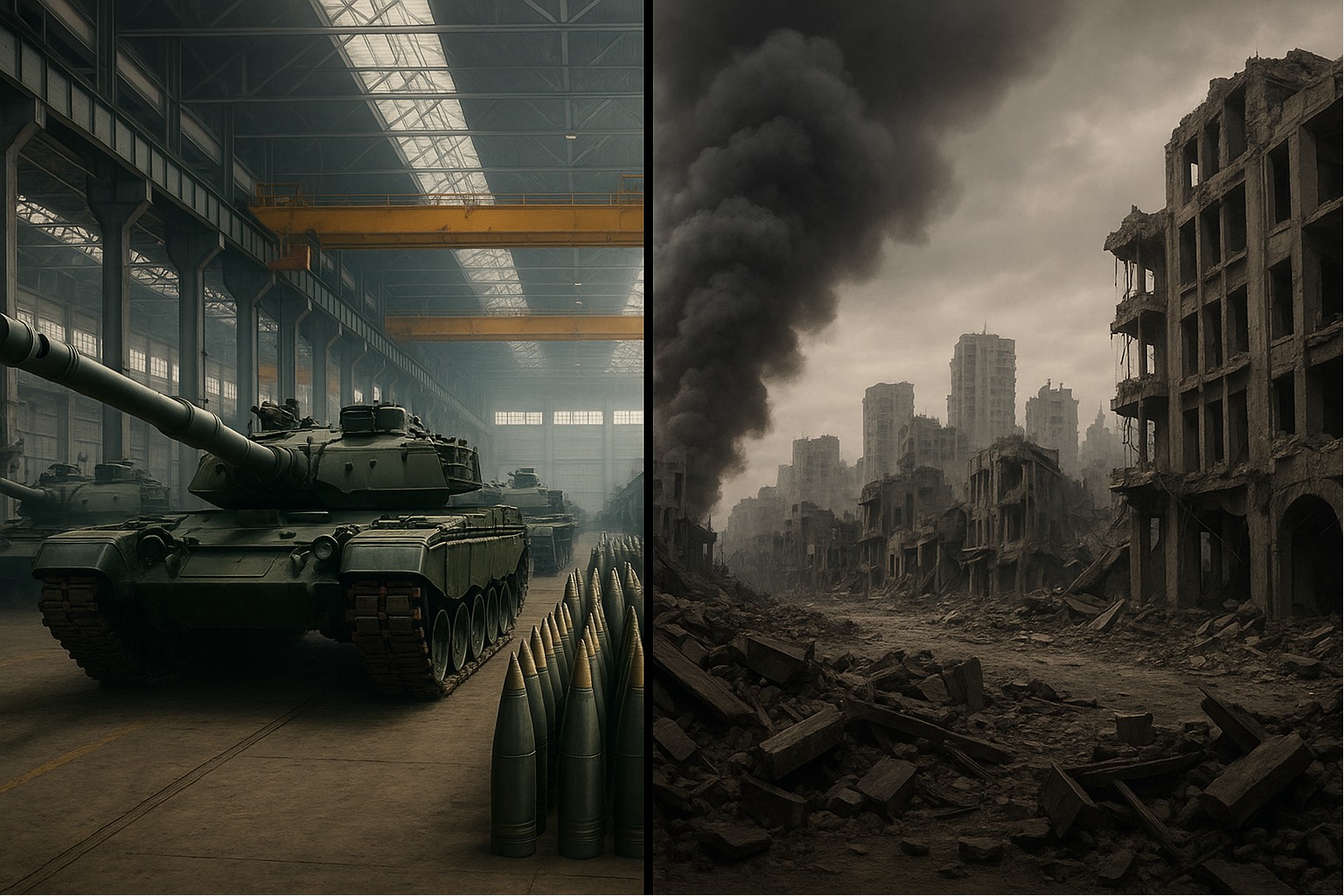A Timeless Economic Debate Rekindled by Global Conflicts
As new geopolitical tensions escalate from Eastern Europe to the Middle East, economists and policymakers are once again asking an uncomfortable question: Is war good or bad for the economy?
The short answer — according to most experts — is “mostly bad.” While defense industries and certain manufacturing sectors may boom during wartime, the overall economic picture is almost always negative, marked by inflation, debt, labor disruptions, and lost productivity.
The Case for War-Time Economic Growth
War has long been associated with industrial surges and job creation. During World War II, for example, the U.S. experienced rapid GDP growth and near-zero unemployment as factories operated around the clock to supply troops abroad.
Modern parallels can be seen in today’s defense and cybersecurity sectors, which experience spikes in contracts and profits during international crises. Governments typically ramp up spending to support military production, injecting billions into local economies.
According to the Stockholm International Peace Research Institute (SIPRI), global military spending hit a record $2.4 trillion in 2024, much of it concentrated in the U.S., China, and Europe — a figure that has risen steadily with each major global conflict.
“War spending is a form of fiscal stimulus,” explains Dr. Elena Roberts, a defense economist at Georgetown University. “Factories reopen, employment rises, and innovation can accelerate — but it’s often a temporary sugar high.”
The Hidden Costs: Debt, Inflation, and Destruction
Despite short-term surges, history consistently shows that the long-term economic effects of war are deeply damaging.
- Infrastructure and capital destruction reduce a nation’s productive capacity.
- Human capital losses — deaths, injuries, and displacement — lower lifetime earnings and labor supply.
- Debt and inflation surge as governments borrow heavily to finance operations.
- Private investment declines, crowded out by military spending.
The Institute for Economics and Peace estimates that conflict costs the global economy over $17 trillion annually, equivalent to 13% of global GDP. That figure includes lost productivity, reconstruction costs, and the economic impact of displaced populations.
“The idea that war can ‘fix’ an economy is a myth,” says economist Paul Hanley of the London School of Economics. “You might see activity on paper, but it’s not productive growth — it’s replacement of what was destroyed.”
Recent Evidence: Ukraine, Gaza, and Global Ripples
The economic fallout from recent conflicts offers real-time evidence of war’s damage.
- Ukraine’s GDP has fallen by nearly 30% since 2022, according to the IMF, as industrial centers and infrastructure were obliterated.
- In Gaza, unemployment spiked more than 60% amid widespread business closures and destroyed utilities.
- Even nations not directly involved feel the effects — global markets react, oil and food prices surge, and inflation spreads worldwide.
“Conflict has become one of the biggest macroeconomic risks of our time,” noted a recent Reuters analysis (October 2025). “Every major war in the 21st century has disrupted global supply chains, capital flows, and consumer confidence.”
Do Any Economies Benefit from War?
Certain sectors undeniably profit from conflict. Defense contractors, arms manufacturers, and energy exporters often post record revenues during wartime.
In 2024, U.S. defense giants Lockheed Martin and Raytheon reported double-digit growth in arms sales. Similarly, oil producers benefited from wartime price spikes.
But these localized gains don’t offset the broader macroeconomic drag. “Defense companies may thrive,” says Roberts, “but for every dollar spent on weapons, that’s a dollar not invested in infrastructure, education, or healthcare.”
The Verdict: Short-Term Surge, Long-Term Scars
While wars can spark bursts of industrial activity, they leave behind a trail of debt, inflation, and broken economies. Economists largely agree that war is not a sustainable path to prosperity.
Postwar reconstruction — such as Europe’s post-WWII Marshall Plan — can drive recovery, but those outcomes depend on international aid, political stability, and sound governance.
In modern economies, war’s most lasting legacy isn’t growth — it’s the economic scars that take decades to heal.
Summary
- War boosts defense and industrial sectors but hurts overall growth.
- Debt, inflation, and infrastructure loss overshadow any temporary stimulus.
- Recent conflicts show severe long-term damage to national economies.
- Economists agree: war is almost never a net economic benefit.
FAQ
Is war ever good for the economy?
Only in very narrow cases — specific industries may benefit, but the overall economy usually suffers.
Why did WWII seem to help the U.S. economy?
It mobilized idle capacity after the Great Depression, but much of that growth came from unsustainable war spending.
What sectors benefit most during war?
Defense, energy, logistics, and cybersecurity industries typically see the biggest gains.
What’s the long-term impact of war?
High national debt, inflation, infrastructure damage, and lost human capital that can last decades.

